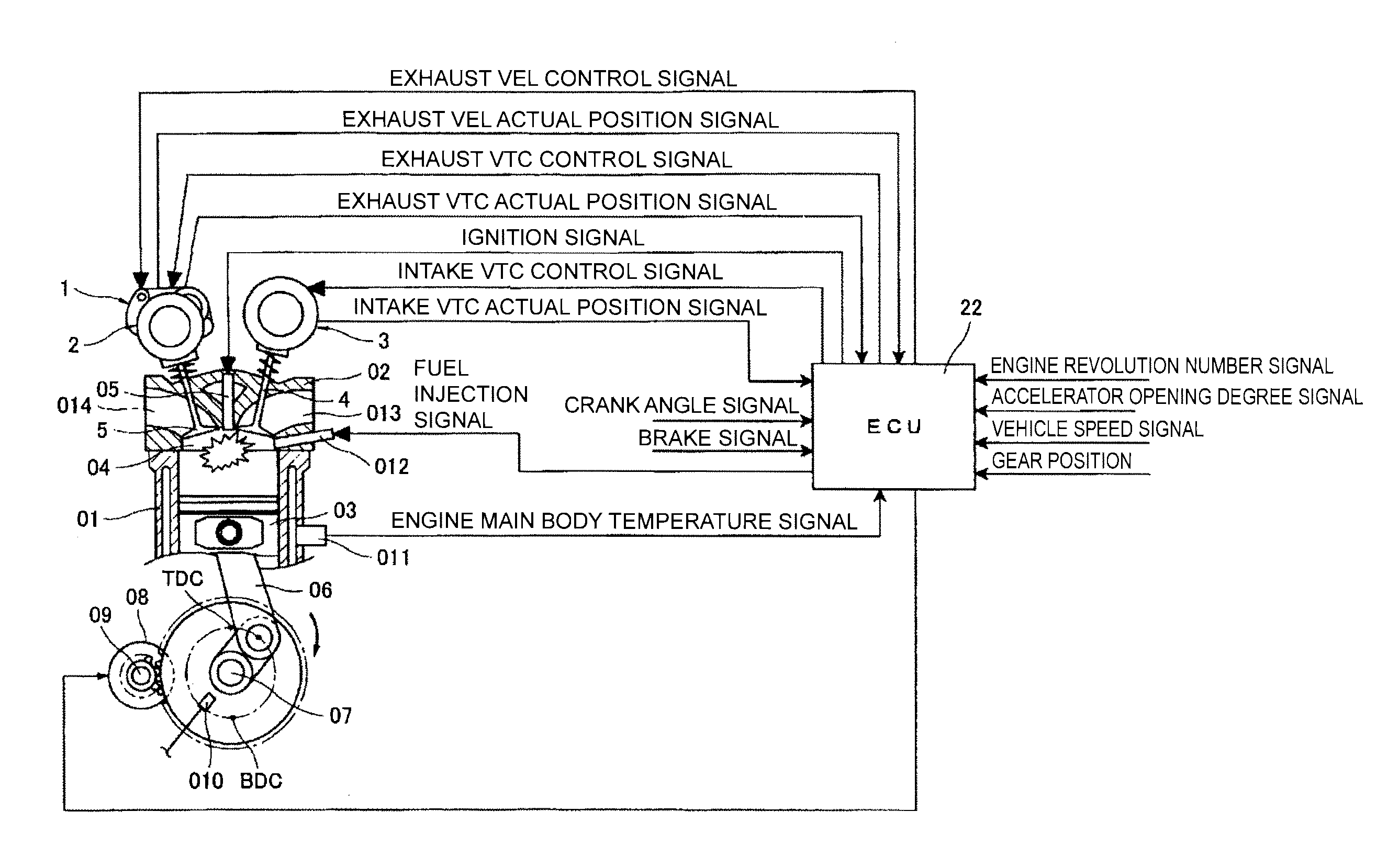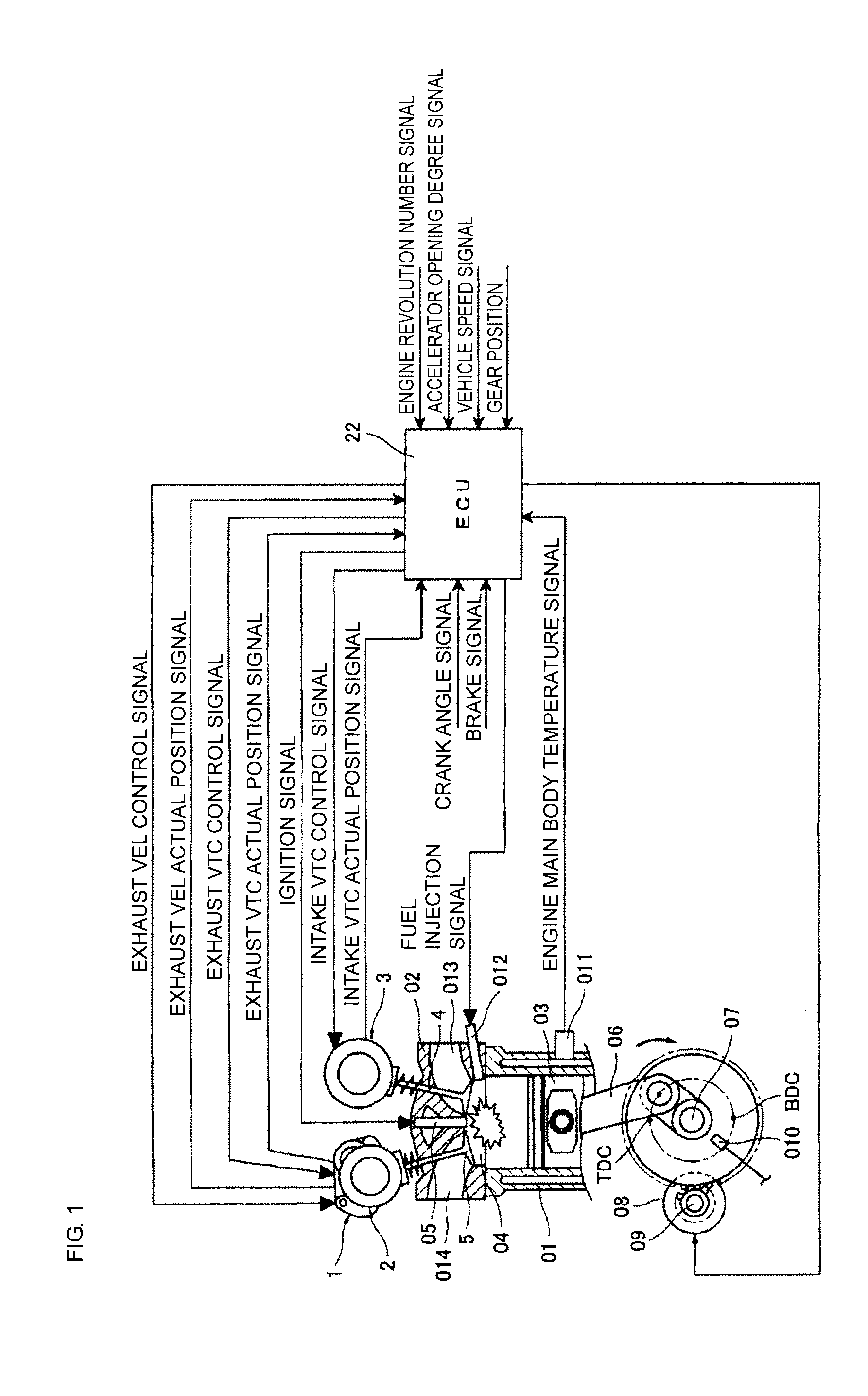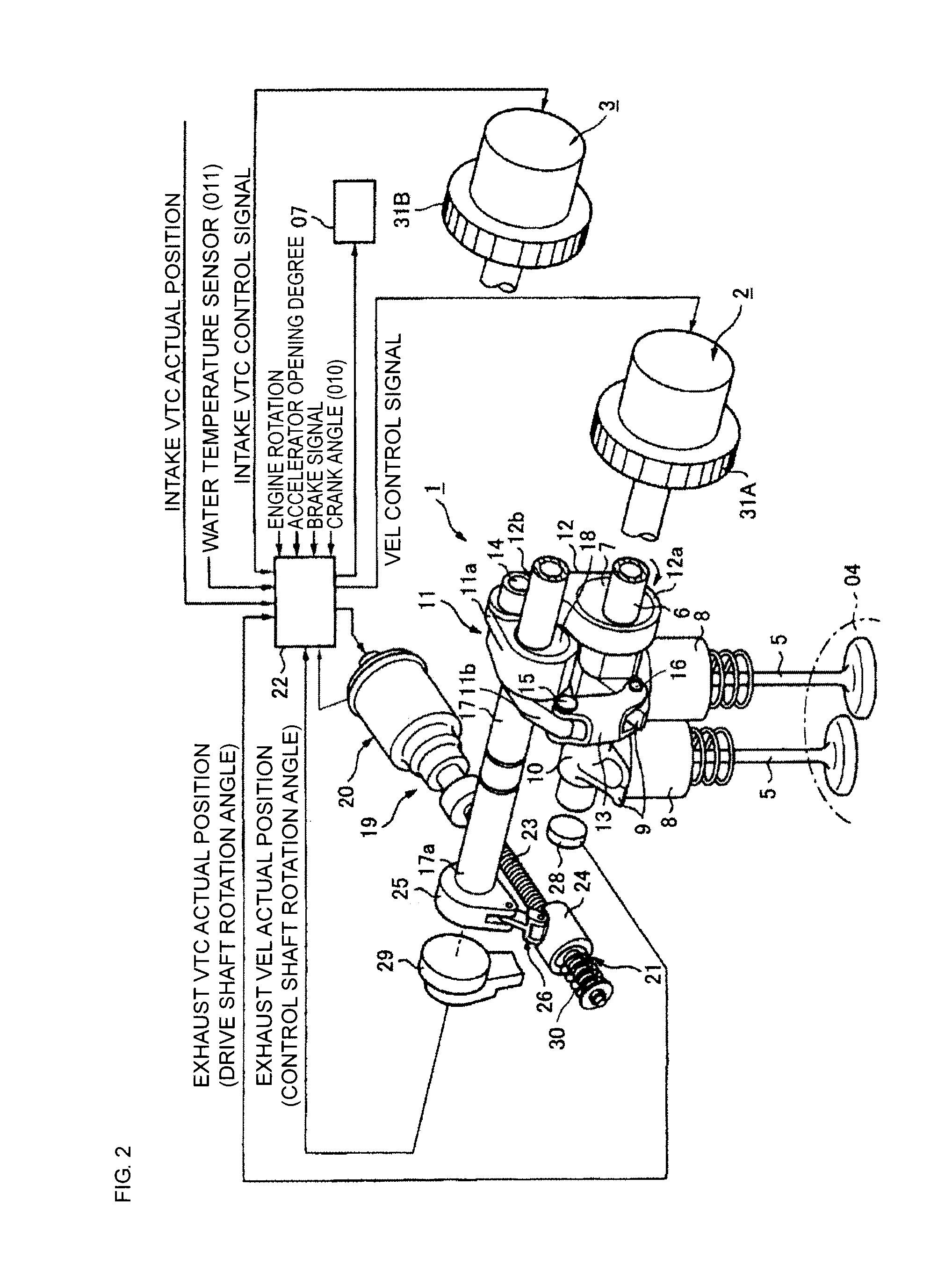Automatic stop/restart control system for an internal combustion engine and variable valve actuating apparatus
a control system and internal combustion engine technology, applied in the direction of electric control, engine starters, machines/engines, etc., can solve the problems of inability to effectively use the expansion energy of the combustion gas, the inability to acquire sufficient combustion torque (rotational force) at the restart, and the inability to start the starter-less engine. the effect of reducing the number of revolutions, increasing the ratio of the starter-less start, and effectively using the combustion torqu
- Summary
- Abstract
- Description
- Claims
- Application Information
AI Technical Summary
Benefits of technology
Problems solved by technology
Method used
Image
Examples
first embodiment
[0086]Referring to FIGS. 8A to 11, a detailed description is now given of a first embodiment of the present invention in an internal combustion engine including the variable valve actuating apparatus as described above. On this occasion, in the embodiment described below, the open timing (EVO1) of the exhaust valves 5 and the close timing (IVC1) of the intake valves 4 upon the restart are both default positions, and are the mechanically stable positions.
[0087]FIGS. 8A and 8B represent behaviors of the exhaust valves 5 and the intake valves 4 while the automatic stop state (upon the fuel injection stop) transitions to the restart state according to this embodiment. On this occasion, the exhaust valves 5 are controlled by the exhaust VEL 1, and the intake valves 4 are controlled by the intake VTC 3.
[0088]A left diagram of FIG. 8A illustrates an example of the open / close states of the exhaust valves 5 and the intake valves 4 in a low rotation travel state before a transition to the aut...
second embodiment
[0150]Referring to FIGS. 12A and 12B, a description is now given of a second embodiment of the present invention. In the first embodiment, when the restart request is generated at the number of revolutions equal to or less than the first predetermined number of revolutions Nk1, the open timing of the exhaust valves 5 and the close timing of the intake valves 4 are changed. The second embodiment is different in such a point that the control signals for changing the open timing of the exhaust valves 5 and the close timing of the intake valves 4 are output without waiting for the restart request at the time point Ta at which the number of revolutions N has decreased to be equal to or less than a fourth predetermined number of revolutions Nk4. It should be noted that the same reference numerals in a flowchart illustrated in FIG. 12B as those of the control steps in the flowchart illustrated in FIG. 11 denote the same processing, and a brief description is thus given thereof.
[0151]As ill...
third embodiment
[0160]With reference to FIGS. 13A and 13B, a description is now given of a third embodiment of the present invention. In the first embodiment, the exhaust VEL 1 is used for controlling the open timing of the exhaust valves 5, but the third embodiment is different in such a point that the exhaust VTC 2 is used in place of the exhaust VEL 1. Thus, the valve lift of the exhaust valves 5 is not controlled, and the valve timing (phase) is controlled as by the intake VTC 3.
[0161]The exhaust VTC 2 and the intake VTC 3 according to this embodiment include practically the same configuration, and both the VTCs 2 and 3 are different from the intake VTC according to the first and second embodiments, and have the most retarded positions as the default positions. In other words, the coil springs 55 and 56 for biasing the vanes 32b of the vane member 32 bias the vanes 32b to the retarded side, and the vanes 32b are set to the most retarded phase when the hydraulic pressure is not supplied. Then, t...
PUM
 Login to View More
Login to View More Abstract
Description
Claims
Application Information
 Login to View More
Login to View More - R&D
- Intellectual Property
- Life Sciences
- Materials
- Tech Scout
- Unparalleled Data Quality
- Higher Quality Content
- 60% Fewer Hallucinations
Browse by: Latest US Patents, China's latest patents, Technical Efficacy Thesaurus, Application Domain, Technology Topic, Popular Technical Reports.
© 2025 PatSnap. All rights reserved.Legal|Privacy policy|Modern Slavery Act Transparency Statement|Sitemap|About US| Contact US: help@patsnap.com



